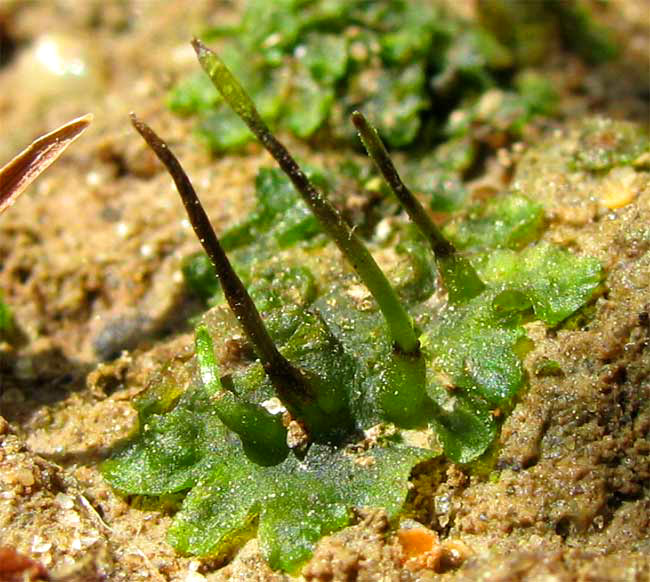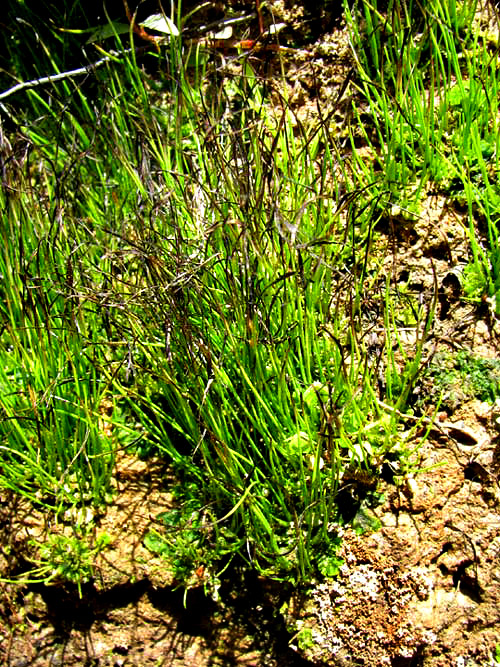Excerpts from Jim Conrad's
Naturalist Newsletter

from the March 30, 2009 Newsletter, issued from the forest near Natchez, Mississippi; elevation ~400ft (120m), ~N31.47°, ~W91.29°:
HORNWORTS DOWN IN THE BAYOU
On a near-vertical clay wall down in the bayou among the usual mosses and ferns I spotted an area about the size of my hand looking like a dense tuft of freshly sprouted grass a couple inches high... whose blade tops had been singed black by fire. In a not-so-pretty but interesting photo you can see what I saw below:

When I followed the "singed" sprouts to their bases, it was clear what I had. You can see new "sprouts" emerging from green blades about half an inch across at the top of this page.
These were hornworts. The "sprouts" were reproductive structures and the blackness was made by masses of black spores being released into the wind. Best I can determine, the hornwort species is ANTHOCEROS PUNCTATUS, of worldwide distribution, but not common. It's been a long time since I saw this species, and that was on a volcano in Mexico.
Hornworts are bryophytes. The three kinds of bryophytes are mosses, liverworts and hornworts. As such they are very primitive, spore-producing plants, on the Tree of Life at the very base of the branch holding land plants. In other words, during Earth's evolutionary history, bryophytes were THE first plants to successfully move onto land. As an article in the American Journal of Botany puts it, "These small, inconspicuous plants have existed for several hundreds of millions of years and have played a prominent role in shaping atmospheric and edaphic change and the subsequent evolution of all forms of plant life on land." That long, technical article is online at http://www.amjbot.org/cgi/content/full/91/10/1557.
Well, this was a great find and the pictures placed here are bound to make a specialist somewhere, someday, very happy to see. Enjoy, specialist, and use the pictures as you wish.